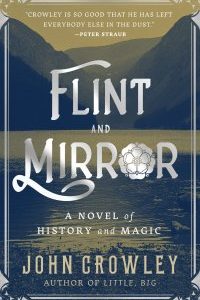Paula Guran Reviews Short Fiction: Nightmare, The Dark, and Dark Discoveries
 Nightmare 7/18
Nightmare 7/18
The Dark 6/18
Dark Discoveries Spring ’18
Nightmare, issue 70, published, as usual, two originals. In “Kylie Land” by Caspian Gray, Kylie Eland lives by “Rules” that help him deal with life, but he doesn’t fit into high school any better than he does anywhere else. He makes friends with Michael Ramage, a shunned new student with a bad reputation, in hopes he can help Ramage. Ramage has an unlikely superpower and is, surprisingly and oddly, able to help Kyle. A quirky little story that manages to satisfy.
Alison Littlewood combines the oft-recycled factual story of a therapy feline that supposedly senses the impending deaths of elderly patients with older cat legends in “Ways to Wake“. Mr. Wescombe, a grumpy old man awaiting death in a nursing home, dislikes Jack, the place’s therapy cat, perhaps for good reason. Waiting to die is unpleasant at best, but Littlewood’s creepy “Ways to Wake” reminds us there may be fates worse than death.
The Dark #37 also regularly has two originals. “In the End, It Always Turns Out the Same” by A.C. Wise is less than 3,600 words and serves up a lot of layers for the length. There are missing children, an old bus driver who doesn’t remember growing old, and who can see the ghosts of children, a memory-ghost of a dog, and a Teen Detective Squad who superficially resemble the Scooby Gang but are trapped, troubled, haunted individuals. It is also about truth, disguise, and how things go wrong, are always wrong. A sublimely weird, disturbing story.
Katie, in Orrin Grey‘s “The Hurrah (aka Corpse Scene)“, knows little of her dead mother: only that she was in a cheap slasher movie that doesn’t even exist in its entirety anymore. The sole photo she has of Mom is a still from the film showing her, the last girl alive, soaked in blood. Katie finally gets hold of a 15-minute section of the movie and knows horror movies well enough to deal with the consequences. I suspect relative newcomers to horror will like this competent tale more than us jaded readers.
Dark Discoveries has gone on hiatus, but did get out one issue, #38, this year. It leads off with “Thursday Night Shift” by Tananarive Due. The story takes place in 1968 during the Memphis sanitation workers strike. If you know your history, you have some idea of at least part of what is involved in this story about Shana, a young girl who senses her own difference. After receiving the gift of a mysterious extraterrestrial stone from her aunt in Africa, this difference becomes more pronounced. The story is intriguing, even though it reads like the start of something more substantial and leaves you wanting more.
“The Run of the Town” oozes trademark Ramsey Campbell atmosphere: a rainstorm results in Plater’s unexpected stay at a hotel in the strange town of Chalmerston. There are weird locals, an eerie mansion, and rumors of odd customs. Not even a mobile phone and a map app can get Plater – or the reader – safely away.
Jeffrey Thomas returns to his Punktown – a vast Earth-founded metropolis on the planet Oasis in which many interstellar races now live – with “Little Wing“. As usual, Thomas is inventively dark and the idea of the scent a long-dead mummified being used as a peerless aphrodisiac is fascinating. There’s an arc here, but one may still come away feeling it is not exactly a story.
Philip Fracassi‘s “Ateuchus” reads a bit too much like a 1950s SF-horror flick: ambitious thwarted scientist allowed to take rare weird find into personal private possession, quick discovery of alien invasion, some stilted humor, body horror. At least the nature of the aliens and their goal is interesting.
Humanity really doesn’t deserve to exist in either Peter Tieryas‘s “Blight” or Sylvain Neuvel‘s “What About My Fucking Meatloaf?” In the first, San Francisco Bay becomes an alien landfill. Soon, Manhattan, Vancouver, and other high-property-value cities become refuse dumps. Food supplies dwindle, but “luckily” there are space slugs to cook and consume. Neuvel’s story is a first-person narrative by a woman who inadvertently drove by something that landed in an Oklahoma field. The something turns folks into monsters and concerns grow from not letting the meatloaf burn to ultimate annihilation via cannibalism.
Neither Rjurik Davidson‘s “The Distance Between Two Points“, which uses science fiction as a convenience to tell a weak story or Robert K.G. Temple‘s “Close to the News” – a vignette in which an adolescent literally consumes the 24-hour newscast cycle – deserve further note.
Paula Guran has edited more than 40 science fiction, fantasy, and horror anthologies and more than 50 novels and collections featuring the same. She’s reviewed and written articles for dozens of publications. She lives in Akron, Ohio, near enough to her grandchildren to frequently be indulgent.
This review and more like it in the August 2018 issue of Locus.
 While you are here, please take a moment to support Locus with a one-time or recurring donation. We rely on reader donations to keep the magazine and site going, and would like to keep the site paywall free, but WE NEED YOUR FINANCIAL SUPPORT to continue quality coverage of the science fiction and fantasy field.
While you are here, please take a moment to support Locus with a one-time or recurring donation. We rely on reader donations to keep the magazine and site going, and would like to keep the site paywall free, but WE NEED YOUR FINANCIAL SUPPORT to continue quality coverage of the science fiction and fantasy field.








